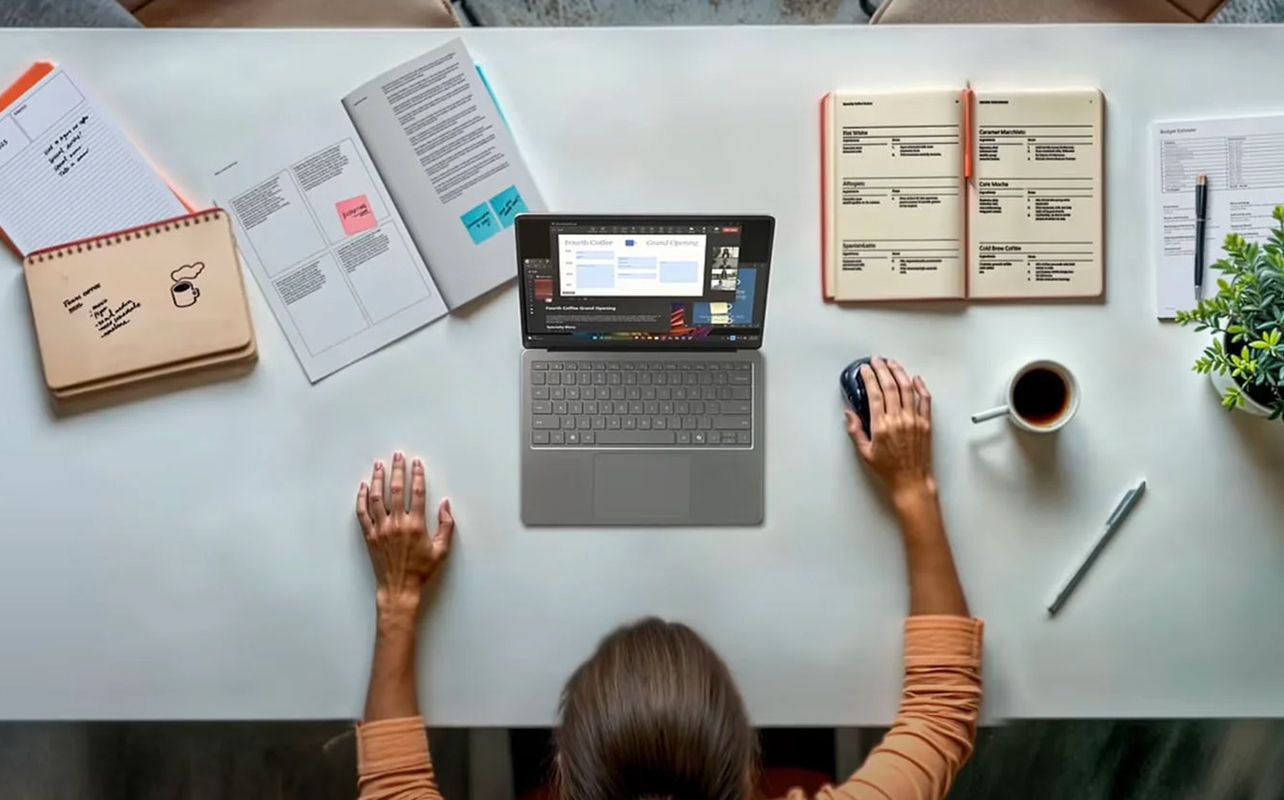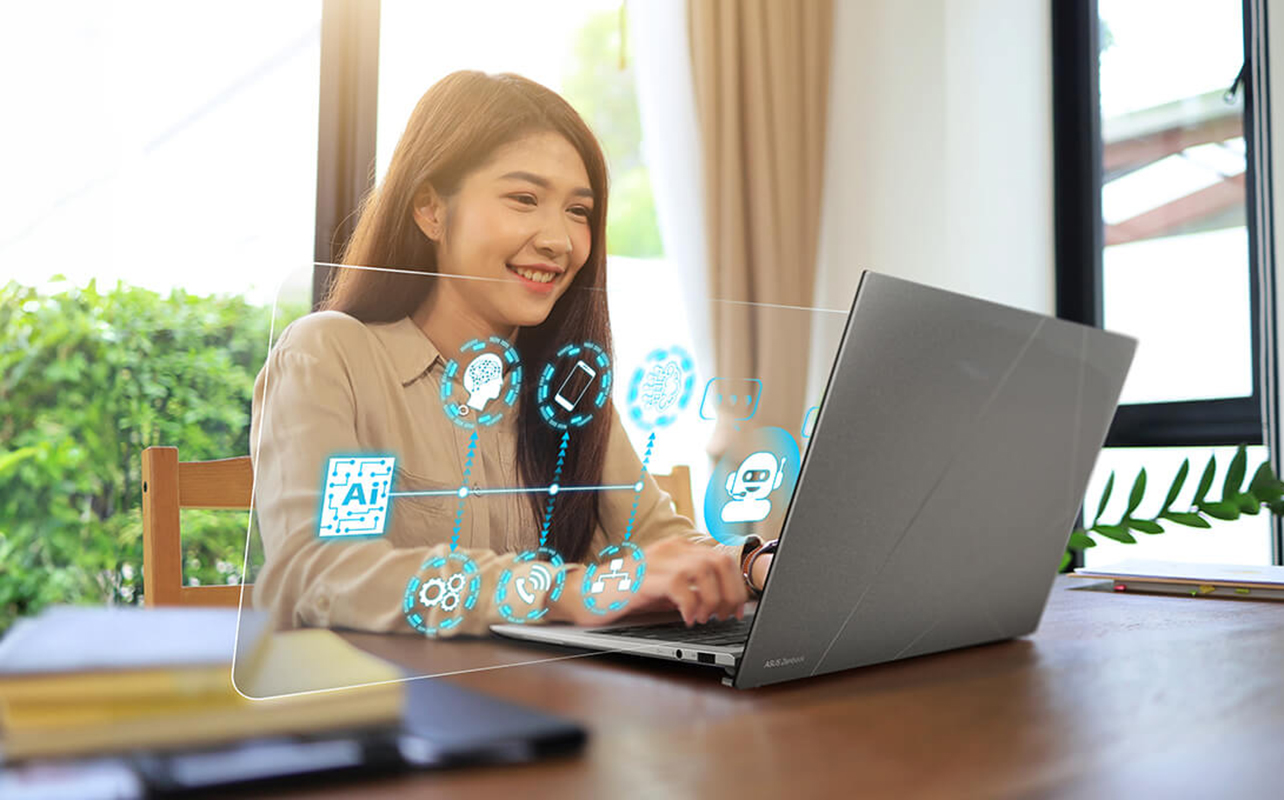
Artificial intelligence is no longer a futuristic concept when it’s already becoming a key part of our everyday digital experience. From smarter search to automated workflows, AI is reshaping how we use our devices, and laptops are at the centre of this transformation.
The right AI laptop is a device that helps you gain access to tools that boost performance, save battery, and enable intelligent features that adapt to your needs. This can apply to you as a student, creative professional, or remote worker, where you can get things done for now and in the years to come by utilizing an AI-powered laptop.
Core technologies behind AI laptops
There are unique technologies at work to make AI laptops the distinct devices that they are, and knowing those distinctions can help you make a more informed buying decision. These features set the stage for smarter, faster, and more efficient computing.
Neural processing units (NPUs)
NPUs are specialized chips built to handle AI-related tasks efficiently, freeing up your CPU and GPU for other processes. Think of them as dedicated engines for real-time language translation, background noise removal, image enhancement, and more.
Because they’re purpose-built, NPUs can process these tasks faster and with less power consumption simply because the CPU and GPU don’t have to do the legwork entirely by themselves. Reallocating the laptop’s resources this way results in better performance and improved battery life—especially valuable if you’re multitasking or working on the go.
You’ll find NPUs integrated into newer models like Copilot+ PCs, designed for AI-accelerated workflows. You can also learn more about how NPUs work by checking out our explainer on how they function as an “AI brain” in your laptop.
Copilot+ integration
Microsoft’s Copilot+ brings next-gen productivity tools into your laptop by integrating AI features directly into Windows 11. At its core, it functions like a digital assistant in that it can help you summarize documents, automate routine tasks, generate images, or find files quickly.
It goes further in how Copilot+ ties into what you’re working on in real-time, be it building presentations, editing content, or writing emails. It’s especially helpful for professionals who want to streamline work or students juggling multiple assignments, particularly as it learns your style and preferences over time. You can explore some of the latest models with this feature in the Surface Laptop collection.
AI-accelerated tasks
AI laptops can enhance common tasks like voice typing, video conferencing, and media editing. AI works behind the scenes to enable useful add-ons like background blur, real-time captions, and image enhancement of images. These features aren’t just flashy—they’re practical. They reduce friction in your day-to-day computing and make your laptop feel faster and more responsive overall.
That’s a big part of the appeal for a variety of productivity-related tasks while working or creating on a laptop. When you spend less time on the peripheral or mundane tasks, you free up more time to focus on the ones that truly matter.

Key specifications to prioritize when shopping
Once you understand the core tech, it’s time to look at the specs that actually power AI features. Here’s what to keep in mind when browsing your options.
Processing power
An NPU on its own doesn’t make or break or an AI laptop. Like traditional laptops, AI laptops come in various configurations as they relate to the CPU and GPU. With that in mind, a combination of a capable CPU and a dedicated NPU is essential. Look for processors from Intel’s Core Ultra or AMD’s Ryzen AI line, both of which are built with AI performance in mind.
These chips ensure your device can handle AI tasks like transcription, automation, and media enhancement, all while running your other apps smoothly. For the best results, choose a laptop with both strong general performance and built-in AI acceleration.
If you have more creative pursuits in mind, consider what GPU may be appropriate for what you want to do. High-end graphics, video rendering, and digital art need stronger processing power to run effectively. Fortunately, these types of laptops are now readily available with AI features included.
Battery life optimization
An underrated benefit of AI in laptops is how it can extend battery life. AI algorithms monitor how you use your device and automatically adjust system performance to save power. For example, your laptop might learn to lower screen brightness during idle moments or pause background apps that aren’t actively being used. This leads to longer unplugged sessions and smarter energy use throughout the day.
Additionally, allocating these (and other) tasks to the onboard NPU reduces the load on the CPU and GPU, thereby reducing how much heat a laptop might generate internally. Less heat means less battery drain.
Display and graphics
AI enhances visual quality in surprising ways—from automatic brightness adjustments to sharper video playback. If you work in design, photography, or video, AI-powered features can save you time by suggesting edits, auto-tagging photos, or even upscaling content. To be clear, a laptop’s built-in AI works independently of the AI features that may be available in specific software programs. The latter may be cloud-based features that only apply within the program, and while they ultimately run through cloud servers, the laptop’s NPU may still help by handling the preliminary processes to speed things up.
For gamers and content creators, pairing a good GPU with AI-optimized software can also deliver smoother, more immersive experiences. Look for laptops that support dynamic display tuning and creative workflows.
Memory and storage
AI operations often run in the background, so your laptop needs enough RAM to multitask effortlessly. Aim for at least 16GB of RAM to support these advanced features without slowing down. Software apps also need memory and the more of them you run, the more RAM necessary to ensure you can run things smoothly.
Fast storage is equally important. Solid-state drives (SSDs), especially NVMe models, allow quick access to large files and help AI tools run without issue. This is crucial if you’re dealing with media projects or large datasets.

Benefits of investing in an AI-ready laptop
Buying an AI-capable laptop is more than just a short-term upgrade—it’s a smart step toward future-proofing your digital life.
AI laptops are designed to adapt and improve over time. As software continues to evolve and updates roll out, your laptop’s NPU and AI features can take advantage of new capabilities without needing new hardware. You’ll benefit from faster tools, more personalized features, and a device that’s ready for tomorrow’s technology.
They also help boost your productivity right away, from speeding up routine tasks to creating new ways to collaborate and communicate.
Questions to ask before buying an AI laptop
Before you commit, consider what features matter most to you. Here’s a quick checklist:
- What tasks do I use my laptop for most often—work, study, creativity, entertainment?
- Do I want — or even need — next-gen features like Copilot+ and NPU-powered processing?
- How important is battery life and portability to me?
- What’s my budget and preferred brand?
- Am I buying for today’s needs or also planning for future tech?
Starting with answers to these questions can guide you toward models that truly meet your needs. Check out the full range of Windows 11 laptops to explore all your options.
An AI laptop is a smart choice
AI laptops are no longer just high-end luxury items—they’re fast becoming the standard for modern computing. By understanding core technologies like NPUs and Copilot+, and choosing the right specs for your needs, you’re setting yourself up for a smarter and more capable device.
As AI tools evolve, your laptop will be ready to grow with them. Whether you’re an early adopter or just curious about the benefits, now is the perfect time to explore what AI laptops can offer.
This article was drafted using AI technology and then reviewed, fact-checked, and revised by a member of our editorial team.





